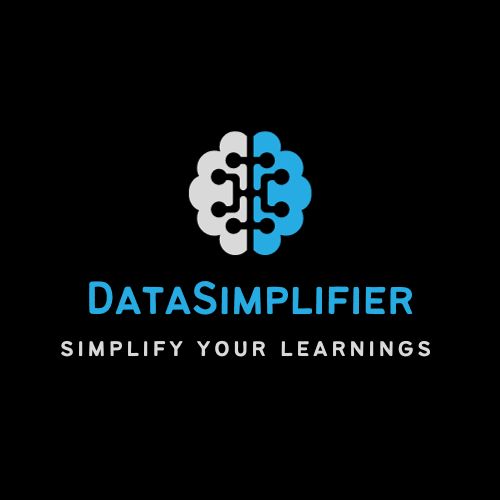Hello, aspiring data scientists and machine learning enthusiasts! If you’re preparing for interviews or looking to level up your career in AI, ML, or data analytics, then this is for you. Deploying machine learning models in real-world environments isn’t just about writing great code; it’s about understanding the end-to-end pipeline, ensuring your model is powerful, robust, and scalable. This is the best guide that will equip you with everything you need to optimize your models for production.

Regardless of whether one is a student or a working professional, these skills will set an individual apart in the job market. This discussion encompasses all aspects of preparing models for production, which include data pre-processing, hyper-parameter optimization, model deployment, and issues faced in the production environment.
You’ll know at the end of this tutorial how to fine-tune machine learning models on large-scale production datasets, how to deploy your models in the most effective ways possible, and how to scale your models up for applications into real-world use cases. You will learn techniques to address difficult challenges, such as data volumes and bias, so you come to understand the reproducibility and predictability of model performance.
Introduction: What Does It Mean to Optimize Models for Production?
Optimizing machine learning models for production involves the process of transforming experimental models into working systems that are deployed seamlessly within real-world applications. Even if a model works exceptionally well in a controlled development environment, it often runs into problems like data drift, system integration issues, and scalability issues when deployed.
Important aspects of optimizing machine learning models for production include:
Data Preprocessing: The preparation and cleaning of real-world data to ensure the model performs consistently.
Model Optimization: Hyperparameter fine-tuning, algorithm selection, and model simplification to maximize efficiency.
Deployment and Scaling: The model should perform well in high-scale production environments.
Monitoring and Maintenance: Keeping track of how the model performs and retraining it when there is data drift or when requirements change.
This guide will take you through these step-by-step procedures and provide actionables to implement in real life.

Key Principles of Optimizing Machine Learning Models for Production
1. Real-World Data Challenges
- Data Quality and Bias: Real-world data is often noisy and unbalanced. Preprocessing techniques such as normalization, outlier detection, and handling missing values are essential.
- Data Drift: Production data can change over time, requiring models to be retrained and updated periodically.
- Scalability: Handling large datasets demands optimized data pipelines for efficient processing.
2. Preprocessing Data for Production Environments
- Automate Data Pipelines: Use tools like Apache Airflow or Kubeflow to automate preprocessing workflows.
- Feature Engineering: Select features that are robust and reliable in production scenarios.
- Data Augmentation: Apply oversampling and data augmentation techniques to address imbalanced datasets.
3. Selection of Appropriate Models and Algorithms
- Algorithm Selection: Choose models that balance accuracy, interpretability, and computational efficiency.
- Model Complexity: Simplify models using techniques like regularization to avoid overfitting.
- Hyperparameter Tuning: Leverage Grid Search or Bayesian Optimization tools to fine-tune parameters effectively.
4. Deploying Production Models
- Batch vs. Real-Time Inference: Decide whether to process data in real time or in batches based on the use case.
- Model Serving Frameworks: Use frameworks like TensorFlow Serving, FastAPI, or Flask for deployment.
- Integration with APIs: Ensure seamless interaction with existing systems through RESTful APIs or similar interfaces.

5. Scaling Models for Large-Scale Production
- Distributed Computing: Utilize frameworks like Apache Spark or Dask for distributed processing.
- Model Compression: Reduce model size using techniques like quantization or pruning to minimize latency.
- Cloud Deployment: Deploy models on cloud platforms such as AWS SageMaker, Azure ML, or Google AI Platform for scalability.
Production Optimization Best Practices
Monitoring and Maintenance
- Performance Metrics: Monitor metrics like latency, throughput, and accuracy to sustain performance.
- Retraining and Updates: Implement automated retraining pipelines to handle evolving data.
- Error Handling: Build fault-tolerant systems to recover gracefully from failures without affecting the user experience.
Security and Compliance
- Data Privacy: Adhere to regulations such as GDPR or CCPA to ensure user data privacy.
- Model Security: Protect models against adversarial attacks using input validation and encryption.
Collaboration and Documentation
- Cross-Team Collaboration: Work closely with DevOps and data engineering teams to streamline deployment.
- Systematic Documentation: Clearly document the model architecture, data preprocessing steps, and deployment pipelines.
Production Optimization in Action
Case Study: Optimizing a Customer Churn Prediction Model
- Problem Statement: A telecom company needed a churn prediction model to identify customers likely to leave.
- Solution:
- Preprocessed historical customer data for uniformity.
- Optimized a Gradient Boosting model for improved accuracy.
- Deployed the model via Flask API for integration with the CRM system.
- Used dashboards to monitor performance and retrained the model quarterly to address data drift.
Document Processing Using NLP Models
- Problem Statement: Automate legal document classification.
- Solution:
- Used pre-trained transformers like BERT for text classification.
- Optimized inference time by converting the model to ONNX format.
- Integrated with an existing document management system for seamless processing.

Interview Preparation: Important Takeaways
- Explain Your Process: Provide detailed explanations of how you’ve optimized models for production in past projects.
- Highlight Challenges: Discuss challenges like data bias or deployment hurdles and your solutions.
- Focus on Results: Showcase measurable outcomes, such as improved accuracy or reduced latency.
Conclusion: Your Roadmap to Mastery
Congratulations! You’ve now completed this tutorial on optimizing machine learning models for production. By now, you should have a strong understanding of the principles, best practices, and tools needed to transform experimental models into production-ready systems.
Remember, optimization for production is an ongoing process. Stay updated on the latest industry trends, work with diverse datasets, and collaborate with peers to refine your skills.
For further insights and resources, join our Telegram community, where you can connect with like-minded professionals and access exclusive job opportunities. Share your experiences, ask questions, and grow your network in this exciting field.
Ready to take the next step? Apply these techniques to your projects today and watch your skills soar!
Training LLMs : 5 Common Mistakes when training LLMs and best overview
Share the post with your friends

1 thought on “Optimizing Machine Learning Models for Production: The Ultimate Best Guide”